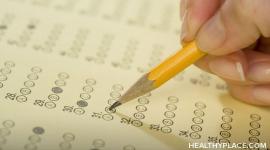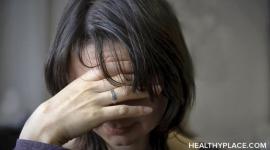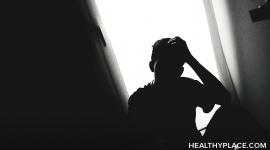The Most Dangerous Bipolar Depression Symptoms and Treatment

Managing bipolar depression symptoms and treatment is always a challenge. However, some bipolar depression symptoms are more dangerous and require immediate treatment. That’s what this article focuses on.
Bipolar depression symptoms are different from regular depression symptoms. When someone is depressed, they usually experience fatigue, low self-esteem, feelings of hopelessness and a number of other physical and emotional challenges. Regular depressive episodes are often described as "unipolar," meaning they are not accompanied by "up" periods. When depression occurs in bipolar disorder, it also includes symptoms of hypomania or mania.
There are different types of bipolar disorder, and symptoms tend to vary from person to person. However, bipolar depression symptoms can be severe, and left untreated they can have a significant impact on social and occupational functioning. It's important to understand these dangers if you or someone you love has bipolar disorder. So let’s take a look at bipolar depression symptoms and treatment and see which symptoms are most dangerous.
Bipolar Depression Symptoms: How Do They Vary?
Bipolar depression symptoms exist on a sliding scale, and there are three main types of bipolar disorder. It's important to know the difference, as treatment may vary depending on your diagnosis.
Bipolar I disorder: Bipolar I is characterized by symptoms of depression accompanied by at least one episode of full mania. Manic symptoms include restlessness, poor sleep, euphoria and impulsive behaviors such as substance abuse, reckless spending or hypersexuality.
Bipolar II disorder: For a person to be diagnosed with bipolar II, they must have experienced at least one major depressive episode lasting two weeks or more, and a minimum of one hypomanic episode. Hypomania is usually described as a lesser version of mania and is not usually considered dangerous. Depressive episodes, on the other hand, can be severe. Studies show that depression symptoms outweigh hypomanic symptoms by about 35 to one in people with bipolar II disorder.
Cyclothymic disorder: Cyclothymia is a chronic and fluctuating mood disturbance in which neither depressive episodes or hypomanic episodes meet the full criteria of bipolar disorder.
Although no type of mental illness is better or worse than another, people with bipolar type I tend to experience more pronounced manic episodes, while those with bipolar type II are more prone to major depression. Those with cyclothymia usually experience both depression and hypomania to a lesser degree than those with bipolar I or II.
Dangerous Bipolar Depression Symptoms and Their Treatment
Certain bipolar depression symptoms can wreak havoc on your life. The most dangerous bipolar depression symptoms include:
- Substance abuse: Some studies indicate that around 60% of people with bipolar disorder also abuse drugs or alcohol.
- Periods of anger and bipolar depression: Aggressive or irate behavior can be a symptom of bipolar depression. This can lead to violence if left untreated.
- Impulsive behavior: People with bipolar disorder can act impulsively during periods of mania/hypomania and depression. This can lead to poor decision-making, compulsive spending or hypersexuality.
- Eating too much or too little: Eating disorders are most common in teenagers and young adults with bipolar disorder.
- Suicidal thoughts and actions: Suicidal behavior is perhaps the most dangerous symptom of bipolar depression, occurring in around one-quarter of people with the disorder. Long-term treatment can reduce the likelihood of suicidal thoughts and actions in people with bipolar disorder, and there are specific drugs that can be taken to tackle depressive symptoms during an episode.
How to Treat Bipolar Depression Symptoms
Treatment for bipolar depression symptoms varies from person to person. If your doctor decides that medication is your best option, an antidepressant may be prescribed. If chronic, fluctuating moods disrupt your life, you may also be given a mood stabilizer. These two types of medication are often taken together.
Psychological treatments, such as therapy, can also help, as well as adjustments to diet, physical activity and lifestyle. Many people with bipolar disorder rely on routines to keep them feeling well, while others stay away from stimulants like caffeine and alcohol to avoid triggering a depressive episode.
If you need advice about bipolar disorder or you’re worried about symptoms of bipolar depression and treatment, you should talk to your doctor or therapist.
APA Reference
Smith, E.
(2021, December 28). The Most Dangerous Bipolar Depression Symptoms and Treatment, HealthyPlace. Retrieved
on 2025, April 19 from https://www.healthyplace.com/bipolar-disorder/bipolar-depression/the-most-dangerous-bipolar-depression-symptoms-and-treatment



